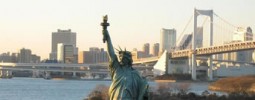Gjirokaster is one of the biggest cities in the south of Albania. It is situated in a valley between the Gjere mountains and the Drino River. Gjirokaster is built on mountainous terrain, so it has many stairs in the small streets. This has given the city the nickname City of Stairs. The city has a population of around 40 thousand people with an ethnic Greek community of about 4000 and communities of Vlachs and Roma.
Gjirokaster has a history of war and occupation, just as other cities in Albania. It was part of the Ottoman Empire, it was occupied by the Greek and in 1939 the city and whole southern region was captured by the Italians. The Greek took control again in 1940, but in 1943 the Germans came. Eventually the city returned to Albanian control in 1944. It was under control of the communistic regime until 1991. The city has an interesting intercultural mix of Albanian, Byzantine and Ottoman heritage and tradition.
Gjirokaster is actually just a museum city. Visit the Etnographic Museum and take a look at some old bazaars and Ottoman houses. Most houses are made of white and black stone. Walk up to the 11th century Gjirokaster Castle or Citadel on top of the hill. This castle and museum city overlooks the city and its surroundings. Gjirokaster has beautiful nature with the surrounding mountains.
Travelers to Gjirokaster need a valid passport. A visa is not required for short visits up to 90 days. You do need a return ticket in order to enter the country. The warmest time to visit the city is in June or July.








